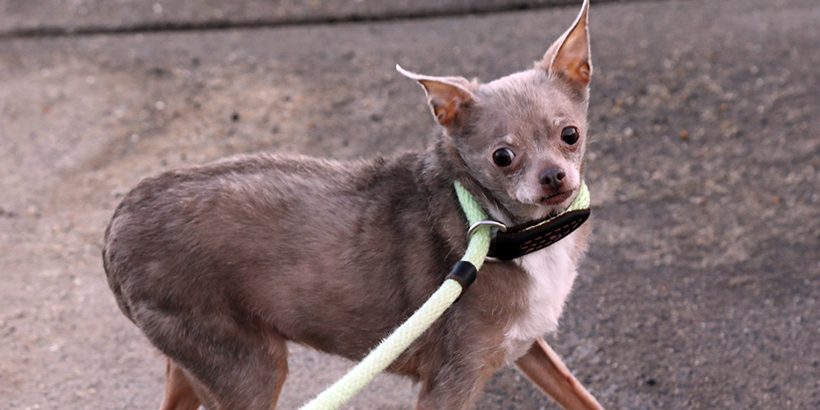
What makes a dog a “Flight Risk”?
- A dog is considered a “flight risk” when they are prone to run away from—rather than toward—people if frightened. They also tend to startle more easily than the average dog.
- Dogs who are considered flight risks may have been under-socialized. They could have had a perfectly happy home previously, but not much experience with new people or places, so they never learned that these things aren’t, necessarily, scary or dangerous.
How can I help my dog settle into our home and stay safe?
- Be aware of things that make loud or sudden noises and try to minimize them. Slamming doors, clattering ice makers, and buzzing or ringing appliances can startle a nervous dog.
- Take frequent, short walks to introduce your dog to the area surrounding your home and help it feel familiar. In case your dog ever gets loose, it will help if they know your neighborhood.
- Keep a collar with ID (your dog’s name and your phone number) on your dog at all times.
- A shy dog may not get close enough to people for them to read a tag. Improve your pet’s ID by getting a collar embroidered in a large, bright font so it’s easy to read from afar.
- Use safe walking equipment that is separate from their ID collar. A nylon or leather leash (not a retractable one), a martingale collar, and harnesses are best for walking flight-risk dogs.
- If you accidentally drop a retractable lead, your dog could feel like the leash is “chasing” them as it retracts.
- A martingale collar can help prevent dogs from backing out of their collar.
- If possible, make sure all pieces of the walking equipment have ID attached or embroidered on them.
- Attach the leash at two points, in case one fails. Use two collars or a collar and harness.
- A leash coupler makes it easy to hook the leash to two separate points.
- Make sure all walking equipment is properly fitted before each and every outing. Collars should not be able to slip over their ears and harnesses should be snug but not tight.
- Flight-risk dogs should be leashed—or in a space that is surrounded by a physical fence—and supervised at all times when outdoors. Dogs who may flee are not a good fit for electric fences as they are prone to run across the threshold when startled. They may be less likely to return as they could be buzzed again trying to cross back into the yard.
While traveling:
- Make sure your dog is thoughtfully secured in your vehicle. If you do not have a way to allow the dog to leave the vehicle directly into a contained area (a garage or fully fenced area), attach the leash and make sure you have ahold of it before opening any car doors.
- Create an “airlock” around your doors with baby gates so your dog cannot push past you and out into an uncontained area.
If your dog gets loose:
- Do not chase your dog. Sit or lie down on the ground and call softly to them. Move slowly to clip the leash back on.
- If the dog does not come back, immediately report the situation to animal control and your neighbors. Post colorful fliers around the area. You can also use a dog tracking service that will help you locate and catch your dog.
